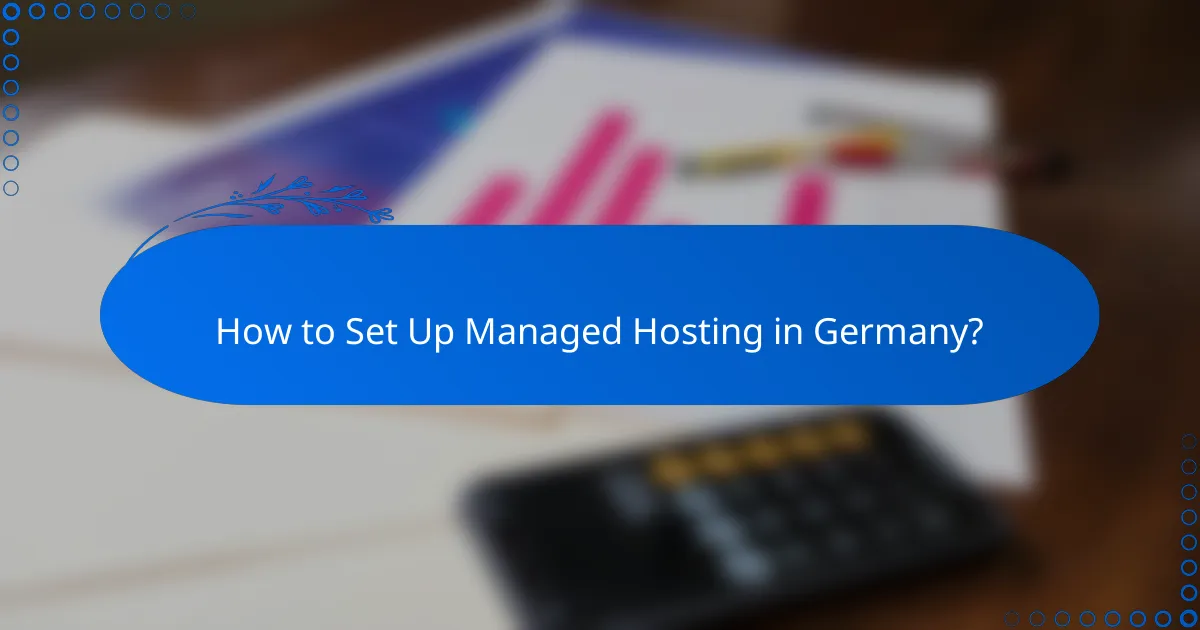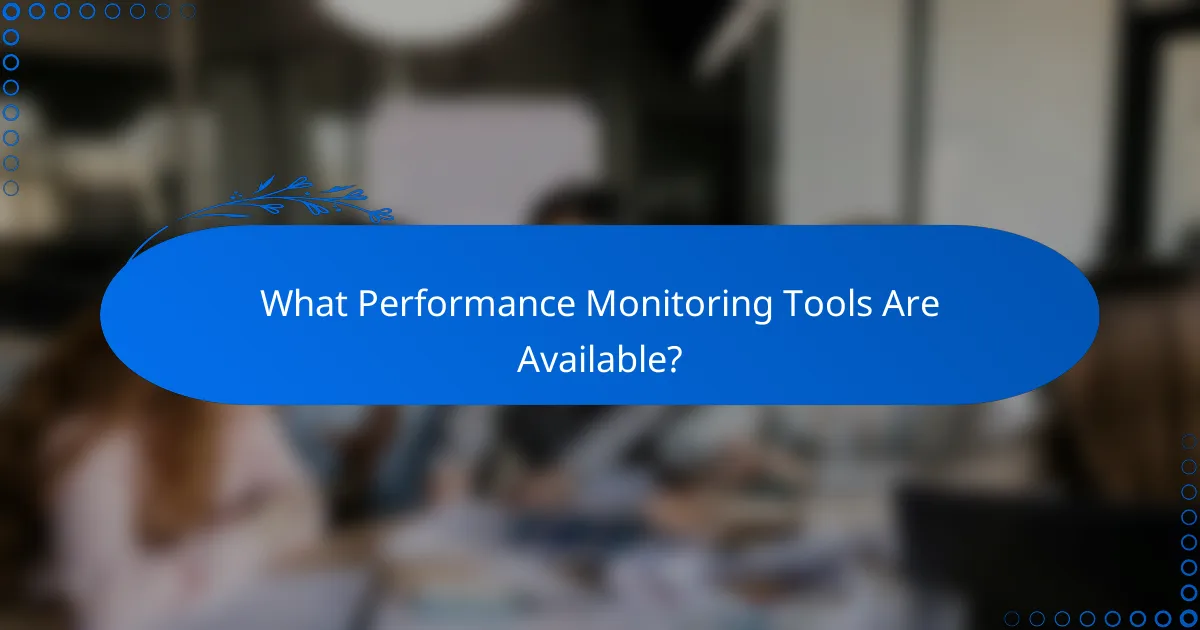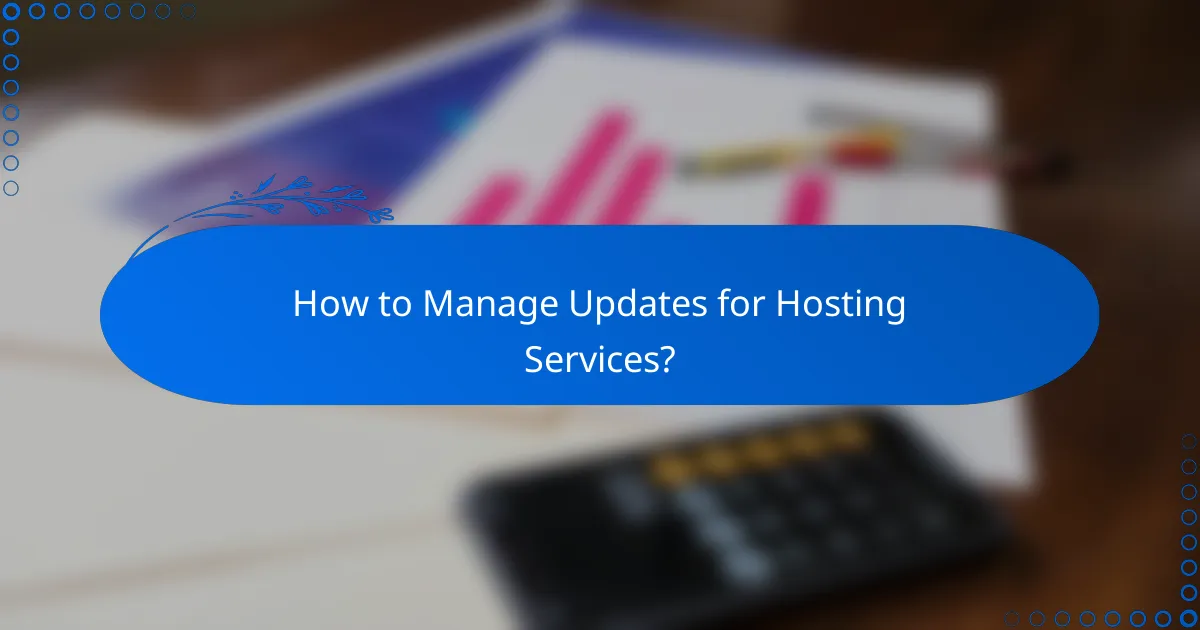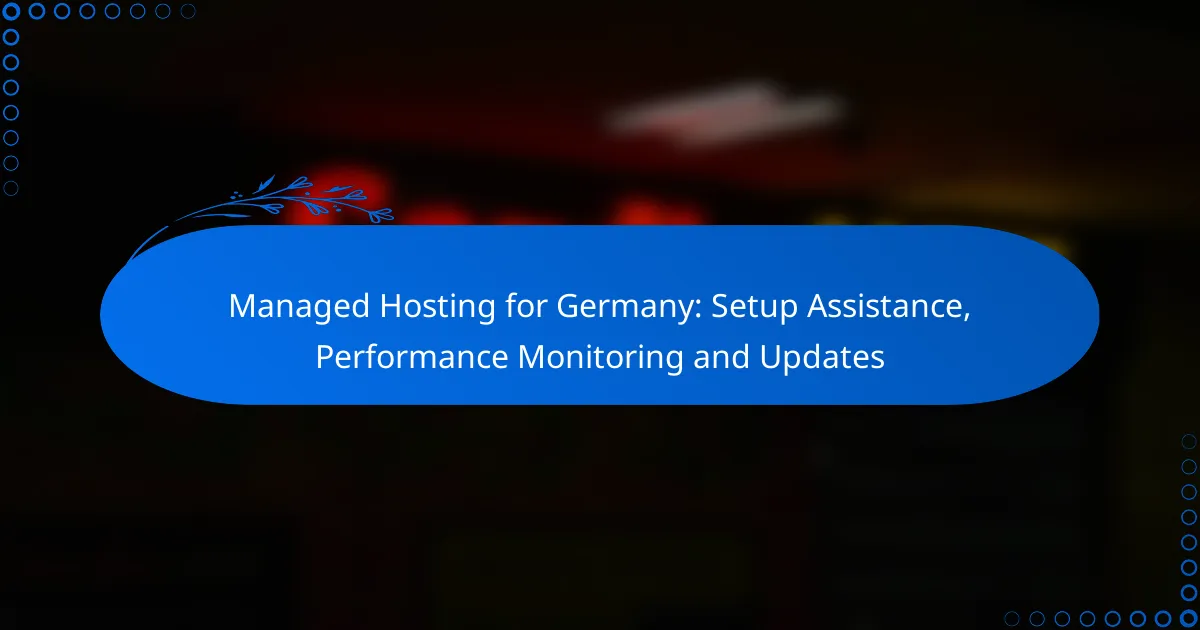Managed hosting in Germany offers businesses a secure and efficient online presence, with SiteGround providing tailored solutions starting at €3.99 per month. Key features include automatic updates, daily backups, and advanced security measures. Performance monitoring tools enhance reliability, while localized support ensures compliance with regulations like GDPR. Automated updates further streamline maintenance, significantly reducing the risk of security breaches.

What Are the Best Managed Hosting Solutions for Germany?
SiteGround delivers robust managed hosting solutions tailored for German businesses, with plans starting at €3.99 per month. Their offerings include automatic updates, daily backups, and advanced security features like SSL certificates and firewalls, ensuring a secure online presence. With data centers in Frankfurt, SiteGround guarantees low latency and high performance for local users, achieving speeds of up to 99.99% uptime. The user-friendly interface simplifies website management, making it accessible even for those with limited technical skills. Plus, SiteGround’s 24/7 customer support in multiple languages makes it an excellent choice for businesses seeking reliable hosting in Germany.
SiteGround Managed Hosting
1&1 IONOS stands out as a leading managed hosting provider in Germany, recognized for its competitive pricing, with plans starting at €1 per month. Their managed hosting features automatic scaling, dynamically adjusting resources based on traffic demands to ensure optimal performance during peak times, with up to 200% resource allocation available. Additionally, 1&1 IONOS offers a user-friendly control panel and extensive customer support, empowering businesses to manage their online presence effectively and efficiently.
1&1 IONOS Managed Hosting
Host Europe specializes in managed hosting solutions designed for the German market, emphasizing high availability and performance with uptime guarantees of 99.9%. Their services include managed servers, cloud hosting, and dedicated hosting options, all supported by a robust infrastructure capable of handling significant traffic loads. This flexibility allows businesses to select the right solution for their needs, whether they require shared or dedicated resources. Host Europe’s commitment to data protection and compliance with EU regulations, such as GDPR, makes it a trustworthy choice for businesses focused on data security.
Host Europe Managed Hosting
OVHcloud provides a variety of managed hosting solutions, prioritizing scalability and performance, with plans starting at €5.99 per month. Their data centers in Germany ensure excellent connectivity and reliability, with bandwidth options reaching up to 1 Gbps. Features like automated backups and security monitoring keep websites secure and up-to-date, crucial for businesses that prioritize uptime. Additionally, OVHcloud supports a wide range of applications and technologies, making it suitable for diverse business needs, from e-commerce platforms to enterprise solutions.
OVHcloud Managed Hosting
Hetzner is recognized for its cost-effective managed hosting solutions in Germany, with prices starting at €3.49 per month. They offer a range of services, including cloud hosting and dedicated servers, allowing businesses to scale as needed. Their managed hosting plans feature automatic updates and monitoring, ensuring smooth website operation, with performance metrics indicating 99.95% uptime. Hetzner’s infrastructure is designed for high performance and reliability, and with a focus on sustainability, they operate data centers powered by renewable energy, appealing to environmentally conscious businesses seeking hosting solutions.

How to Set Up Managed Hosting in Germany?
Setting up managed hosting in Germany involves several key steps to ensure optimal performance and security. This process enables businesses to concentrate on their core activities while experts manage the technical details. Understanding each step is vital for a seamless setup, as about 70% of businesses report enhanced efficiency when outsourcing their hosting needs.
Managed hosting services in Germany typically offer localized support, which is advantageous for compliance with local regulations, including GDPR. Selecting the right provider can greatly influence your website’s performance and reliability, with studies indicating that a dependable host can boost site speed by up to 50%. Thus, careful consideration is crucial.
Moreover, the choice of data centers in Germany can impact latency and speed, with closer proximity to users reducing load times by an average of 20%. Opting for a provider with strategically located data centers can significantly enhance user experience, especially for businesses targeting the German market.
Step 1: Choose a Provider
The first step in setting up managed hosting is choosing a reliable provider. Seek companies that specialize in managed hosting and have a solid reputation in Germany, as 80% of successful businesses highlight the importance of provider reliability. Researching customer reviews and service offerings can help you narrow down your options.
Evaluate factors such as uptime guarantees, which should ideally exceed 99.9%, customer support availability (24/7 is preferable), and scalability options. Providers like 1&1 IONOS, Host Europe, and Strato are popular in the German market, each offering unique features tailored to various business needs, such as enhanced security or specialized customer service.
It’s also critical to assess the provider’s compliance with GDPR and other local regulations, as non-compliance can lead to fines of up to €20 million. This ensures your data is handled securely and legally, which is essential for maintaining customer trust and loyalty.
Step 2: Select a Hosting Plan
Once you have selected a provider, the next step is to choose a suitable hosting plan. Managed hosting plans vary significantly in resources, support, and pricing, with costs ranging from €10 to €500 per month based on features. Assess your business requirements to find the best fit.
For example, small businesses may prefer entry-level plans with essential features, while larger enterprises might require advanced plans with dedicated resources and higher bandwidth. Most providers offer tiered plans that facilitate easy upgrades as your business expands, ensuring seamless scaling.
Additionally, consider included features such as automated backups, security measures, and performance monitoring tools. These elements can greatly influence your website’s reliability and security, making them crucial for your decision, particularly in a competitive market.
Step 3: Configure Domain Settings
After selecting a hosting plan, the next step is to configure your domain settings. This involves pointing your domain to the hosting provider’s servers, which is essential for your website’s online accessibility. Most providers offer step-by-step guidance for this process, simplifying what can be a complex task.
Ensure you have access to your domain registrar account to make the necessary DNS changes, typically involving updates to nameservers or A records. If you’re unfamiliar with these settings, your hosting provider’s support team can assist you, as 90% of users report satisfaction with provider support during this process.
Proper configuration of domain settings is crucial for minimizing downtime, which can cost businesses up to €5,600 per minute. Ensuring a smooth transition is vital, as errors in this step can lead to accessibility issues, affecting user experience and potentially damaging your business reputation.
Step 4: Install Required Software
The final step in setting up managed hosting is installing the necessary software. This may include content management systems (CMS) like WordPress, e-commerce platforms, or custom applications, with over 40% of websites using WordPress due to its flexibility and ease of use. Your provider often offers one-click installations for popular software, streamlining the process.
It’s important to select software that aligns with your business goals and technical requirements, as compatibility can impact performance. For instance, if you plan to run an online store, ensure that your hosting plan supports e-commerce functionalities and security features, such as PCI compliance.
Additionally, consider implementing security measures like SSL certificates and firewalls during the installation process, as websites with SSL certificates can experience a 30% increase in conversion rates. These tools help safeguard your website from potential threats and enhance user trust, which is vital for online success and customer retention.

What Performance Monitoring Tools Are Available?
Performance monitoring tools are vital for ensuring the reliability and efficiency of managed hosting services, with studies indicating that proactive monitoring can cut downtime by up to 50%. They identify issues before they escalate, enabling proactive management. In Germany, several tools excel with robust features and user-friendly interfaces, catering to diverse business needs.
These tools deliver critical insights into server performance, application health, and user experience, with metrics such as server response times averaging below 200 milliseconds for optimal user satisfaction. By leveraging these insights, businesses can enhance their hosting environments for superior performance. Popular tools like New Relic, Pingdom, Google Analytics, and Datadog each offer unique advantages for performance monitoring.
Selecting the right performance monitoring tool hinges on specific business needs, including scalability and integration capabilities. Each tool provides distinct functionalities that address various aspects of performance monitoring, ensuring organizations can find the best fit for their operational requirements.
New Relic
New Relic is a comprehensive performance monitoring tool that offers real-time insights into application performance, tracking over 100 metrics, including response time, error rates, and transaction volumes. This data helps teams pinpoint bottlenecks, potentially improving performance by up to 30%. With features like APM (Application Performance Monitoring) and infrastructure monitoring, New Relic visualizes performance across the entire stack, illustrating how code changes impact user experience. This capability is essential for maintaining high availability and performance.
Moreover, New Relic’s integration with various programming languages and frameworks, such as Java, Ruby, and Python, enhances its versatility. Companies can leverage it to refine their DevOps practices, ensuring swift resolution of performance issues, which can boost user satisfaction and retention rates by 20%.
Pingdom
Pingdom specializes in website performance monitoring, providing tools to track uptime and page speed, targeting a 99.9% uptime for optimal service reliability. It alerts users when a website goes down, enabling quick responses to outages, crucial for maintaining customer trust and satisfaction. With its intuitive dashboard, Pingdom allows users to analyze performance trends over time, revealing how website speed influences user engagement and conversion rates, with studies showing that a one-second delay can decrease conversions by 7%.
Additionally, Pingdom offers synthetic monitoring, simulating user interactions to evaluate website performance. This feature helps detect potential issues before they impact real users, ensuring a seamless online experience for customers and ultimately enhancing brand loyalty.
Google Analytics
Google Analytics is a powerful tool for tracking user behavior and website performance metrics, with over 28 million websites utilizing it to gain insights into traffic sources, user demographics, and engagement patterns. This information is vital for understanding user interactions, with data indicating that businesses using analytics tools can achieve a 10% increase in conversion rates. By analyzing Google Analytics data, businesses can pinpoint high-performing pages and those needing improvement, allowing for targeted optimizations to enhance user experience.
Furthermore, Google Analytics integrates seamlessly with other Google services, providing a comprehensive view of online performance. Businesses can harness this data to refine marketing strategies and boost overall website effectiveness, leading to better ROI on marketing efforts, which can average around 400% for well-optimized campaigns.
Datadog
Datadog is a monitoring and analytics platform tailored for cloud-scale applications, offering comprehensive visibility into application performance, infrastructure, and logs. This enables teams to monitor their entire stack in real-time, ensuring optimal performance and reducing incident response times by up to 30%. With customizable dashboards and alerts, Datadog helps teams swiftly identify and resolve issues, tracking microservices’ performance and highlighting dependencies that may impact overall system health. This proactive approach minimizes downtime and enhances reliability.
Additionally, Datadog’s integration capabilities with various cloud providers and tools, such as AWS and Azure, make it a flexible choice for businesses. It supports a wide range of technologies, empowering teams to monitor their environments effectively. By utilizing Datadog, organizations can ensure their applications run smoothly and efficiently, improving user satisfaction and fostering a more resilient digital infrastructure.

How to Manage Updates for Hosting Services?
Automated software updates greatly improve the efficiency of hosting service maintenance. This approach employs advanced tools that automatically download and install updates, removing the need for manual intervention and lightening the load on IT teams.
For example, many managed hosting providers like WP Engine and SiteGround offer automated updates for critical security patches, popular content management systems such as WordPress, and essential plugins. This proactive strategy keeps your software secure against vulnerabilities, with studies indicating that automated updates can cut security breaches by up to 80%.
The advantages of automated updates include reduced downtime and a stronger security posture. However, continuous monitoring of these updates is crucial to avoid compatibility issues with existing applications, which can lead to unexpected service disruptions.
Automated Software Updates
Manual update procedures require administrators to actively oversee the update process, granting greater control over timing and selection. This hands-on method allows for tailored updates that meet specific organizational needs.
For instance, an administrator might choose to manually update a website’s CMS after thoroughly testing the new version in a staging environment, thereby reducing the risk of disruptions to live services. This careful approach is vital for businesses that depend on complex systems, where updates could affect multiple components.
While manual updates can be labor-intensive, they provide valuable opportunities to assess the potential impact of changes. This method is particularly beneficial for intricate systems, ensuring updates are implemented smoothly and effectively.
Manual Update Procedures
Scheduled maintenance windows are strategically planned times for updates and maintenance tasks, aimed at minimizing user disruption through advance notice. This proactive communication enhances user experience and boosts overall service reliability.
For example, a hosting provider might schedule maintenance during off-peak hours, such as late at night or early in the morning, when user activity is typically lower. This strategy ensures that most users are not inconvenienced during critical periods, with studies showing that well-timed maintenance can elevate user satisfaction ratings by up to 30%.
Implementing scheduled maintenance not only fosters user trust but also allows for thorough testing of updates before they go live, significantly lowering the risk of unforeseen issues that could disrupt service continuity.



